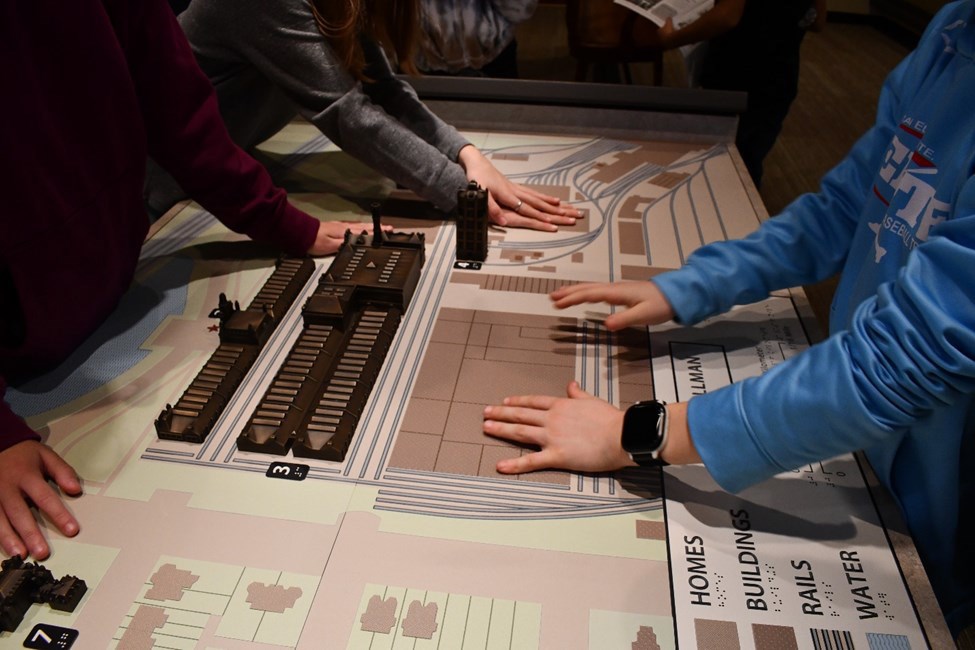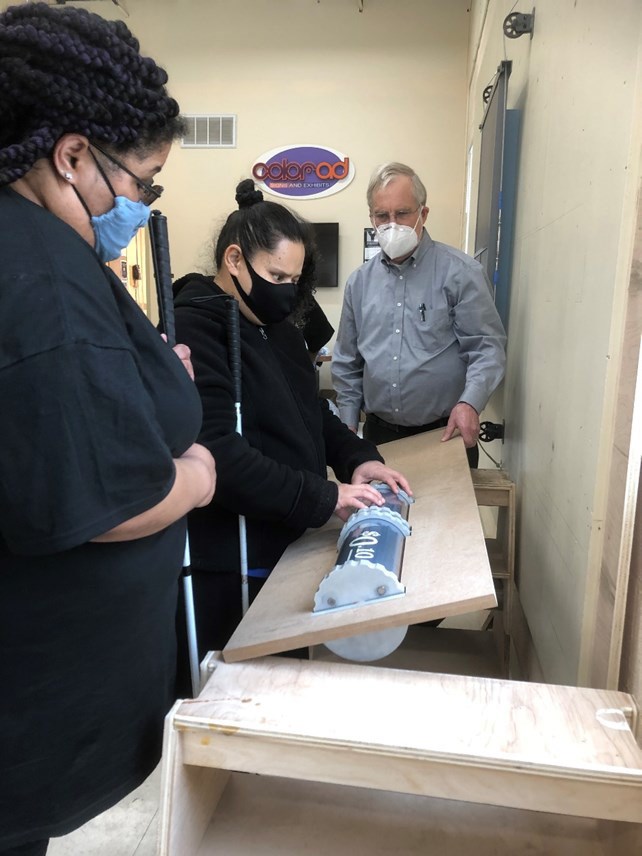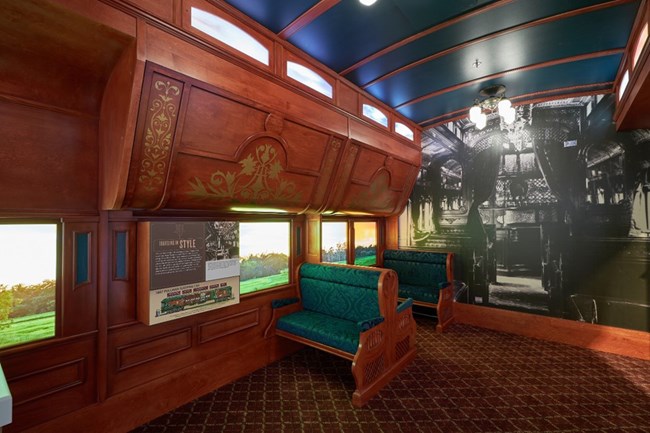Last updated: April 24, 2023
Article
Universal Design at Pullman National Historical Park

NPS Photo
A ranger describes the unique sensory experience of exploring Pullman National Historical Park’s NPS Visitor Center Exhibit Hall
From the moment you enter the Pullman National Historical Park's National Park Service Visitor Center, you will notice interesting features not found in every museum.

NPS Photo/K. Brookes
Some of the unique accessible features in the Visitor Center include tactile 3-D maps of Pullman structures and rail cars, closed captioning for the audio-visual displays, low exhibits with wheelchair clearance, and a soundscape including train whistles and factory sounds. Unlike many museums, visitors are encouraged to touch most of the displays.

NPS Photo/K. Brookes
A conversation with Kevin Brookes, Contracting Officer’s Representative for fabrication of Pullman National Historical Park’s NPS Visitor Center Exhibits
How long have you worked in the museum and exhibit design profession?
I’ve been in this area since the early 90’s when I had my first job creating shop drawings for a fabrication firm. It’s a niche industry, highly specialized and unique. It’s probably one of the few fields a design professional can really experience and be part of a multi-disciplined project, such as the Pullman Exhibits.
What is your role within the National Park Service?
I work at the Harpers Ferry Interpretive Design Center, the IDC. The center has many professionals who work in Publications, Conservation, AV Media and Interpretive Media. We create products to support and accomplish the mission of the National Park Service. Some days I have to pinch myself because I work in such an amazing place, and get to travel to multiple parks, meet incredible, dedicated employees, and experience such diverse and amazing sites across the National Park Service.
What approach did you take to incorporate Universal Design into the exhibit space at Pullman National Historical Park’s National Park Service Visitor Center?
The design team and I reviewed each of the exhibit features, the various content stories, and themes of each exhibit and attempted to identify that which would convey the key content in another form, providing another way for a visitor to access the exhibit.

NPS Photo/K. Brookes
The Scenic Rail Car. The major challenge was gathering the historical drawings and visual reference material. I can’t say enough about the work done by the Historical experts to gather this information; without that work there would not be a scenic rail car or tactile rail car, elements that showcase the innovations and products produced on the Pullman Site.
What is your favorite exhibit element at Pullman HP?
It has to be The Scenic Rail Car again - mainly because of the work flow, and the collaborative effort it took to create it. It was a real experience in research, interpretation and exhibit design, and installation. I am truly stunned at the work that was accomplished. It’s not just a recreation of a sleeper car interior, there were many requirements and constraints that meant we had to take some carefully calculated artistic license with the historical design, without losing the key features that made it a Pullman Sleeper Car.
